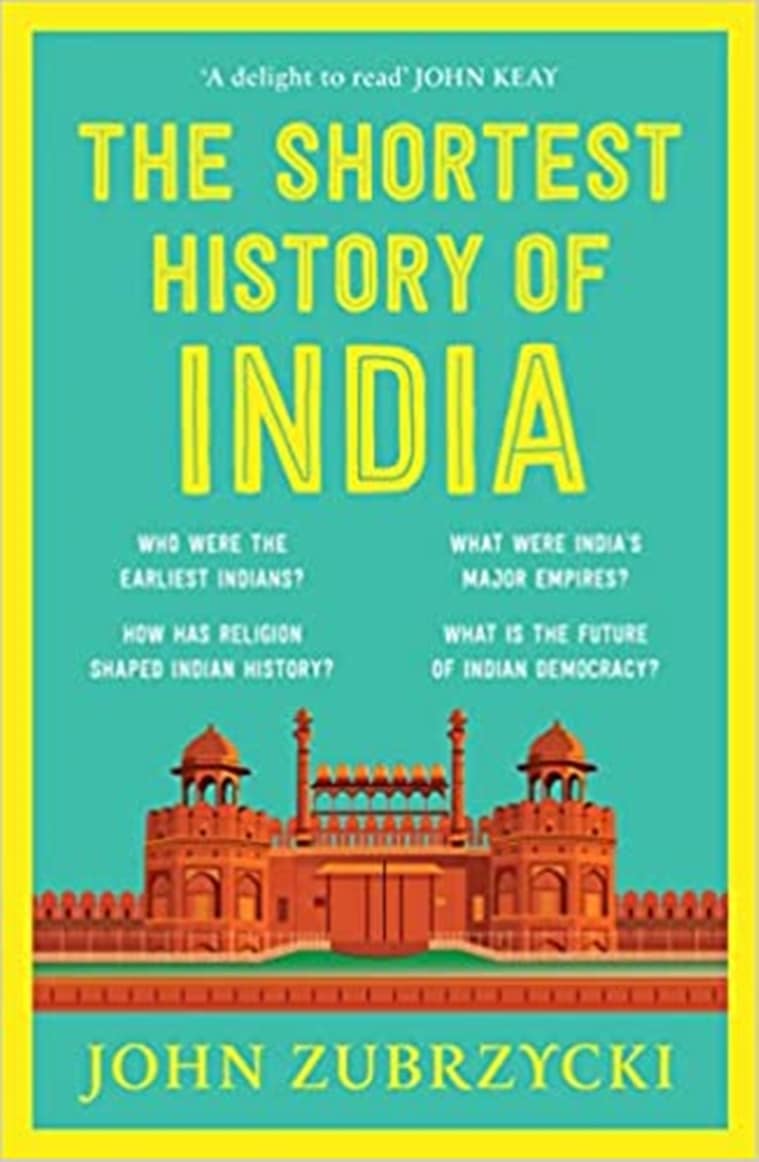Review: John Zubrzycki’s The Shortest History of India acts as an antidote to blinkered images of India’s past on social media
The book that compresses 5,000 years of the country’s history in less than 300 pages makes nuanced observations on aspects such as how religion shaped Indian history
 The Shortest History of India by John Zubrzycki; Picador India; 288 pages; Rs 599. (Source: Amazon.in)
The Shortest History of India by John Zubrzycki; Picador India; 288 pages; Rs 599. (Source: Amazon.in)One of the key axioms of the discipline of history is that the past finds a way to sneak its way into the present. That truism is finding expression today in disparate, even paradoxical, ways. On the one hand, the discipline of history seems to be embattled as the past is drawn into current ideological battles. Events and personalities of ancient and medieval times are subject matter for popular culture, notably cinema. On the other hand, interest in historical research seems to be spreading beyond academia. The proliferation of works directed at a non-academic audience testifies to this phenomenon. Professional historians and scholars without affiliation to institutions have participated in this efflorescence.
It is difficult to slot John Zubrzycki into any of these neat categories. He has worked as a journalist, diplomat, and teacher and is the author of several critically acclaimed Indian history and culture books. His ability to straddle diverse professional boundaries, perhaps, enables the Australian scholar to pull off what many might think to be impossible: The Shortest History of India compresses 5,000 years of the country’s history — from the Harappan period to the “New India” being shaped by the current political dispensation — in less than 300 pages. It’s a book that will find a place in university libraries. But The Shortest History of India should have a readership beyond institutions. Because as Zubrzycki writes, “As India looks beyond the 75th anniversary of its independence, the burden of history and the desire to restore its past glory is weighing heavily on its politics and society”.
 The Shortest History of India compresses 5,000 years of the country’s history in less than 300 pages. (Source: Amazon.in)
The Shortest History of India compresses 5,000 years of the country’s history in less than 300 pages. (Source: Amazon.in)
Very often such broad-brush accounts lapse into the Rankean folly of looking at history as descriptions of kings and rulers. Zubrzycki’s account has place of eminence for the Chola, Maurya, Mughals, the British rulers, and Indian nationalists. The preliminary pages also have a list of dates of some of the seminal events in the country’s history. But The Shortest History of India’s greatest merit is drawing the reader toward other interesting aspects of the past: How did religion shape the country’s history? What was the role of trade? How did the caste system function? What were the views of foreign travellers? It also takes the reader to significant post-Independence events: Mahatma Gandhi’s assassination, the war with China, the turmoil in the Congress, the Emergency, the Mandal Commission, the economic reforms and the tearing down of the Babri Masjid and the rise of Hindutva.
The brief biographies in the book will help the reader unravel social processes and she is sure to come away with a picture of a country that is diverse and complex — one that resists being cast as a monolith. His abiding concern for the country’s diversity is, in fact, one reason that Zubrzycki describes India’s democracy as the country’s greatest achievement after Independence: “Over more than seven decades, it has successfully conducted 17 general elections and hundreds of state polls with participation rates that regularly outstrip the world’s next largest democratic country, the USA. A free and vibrant press and a civil society keep a check on the inevitable lapses of its politicians”.
He is also right in cautioning that this success shouldn’t blinker India watchers to the main unfulfilled tasks — improving standards of life, removing gender and caste disparities, cleaning rivers, addressing pollution, and educational and health-related shortcomings.
Zubrzycki’s greatest concern, however, is the nation’s recent slip towards majoritarianism. “What India has lost and what will be hardest to restore is the state’s commitment to secularism,” he writes in the book’s concluding chapter. As a powerful caveat for people interested in history, he writes: “In recent decades, notions of India as a historical entity, a people and a civilisation has become highly politicised. Hindu nationalists refer to India as Bharat Varsha, the ancient Sanskrit name for a homeland that stretches from the ‘Indus to the Seas’. The evidence for charting India’s history is longer found in archaeological records or genetic DNA but in mythological epics such as Mahabharata. India’s ‘real heritage’ is contained in even older texts such as the Vedas.” That’s also the reason that works such as his should be antidotes to accounts of the past that are peddled today in fora as diverse as TV and cinema to social media platforms such as WhatsApp and Twitter.
Zubrzycki, however, is not all pessimistic. “As a civilisation, India has shown remarkable resilience, tackling challenges such as growing inequality and authoritarianism, and providing a model to the world. Visionary leaders will emerge who can unite the country’s diverse communities and ensure that the country’s social and economic progress are spread equitably and sustainably.”
Photos


- 01
- 02
- 03
- 04
- 05





























